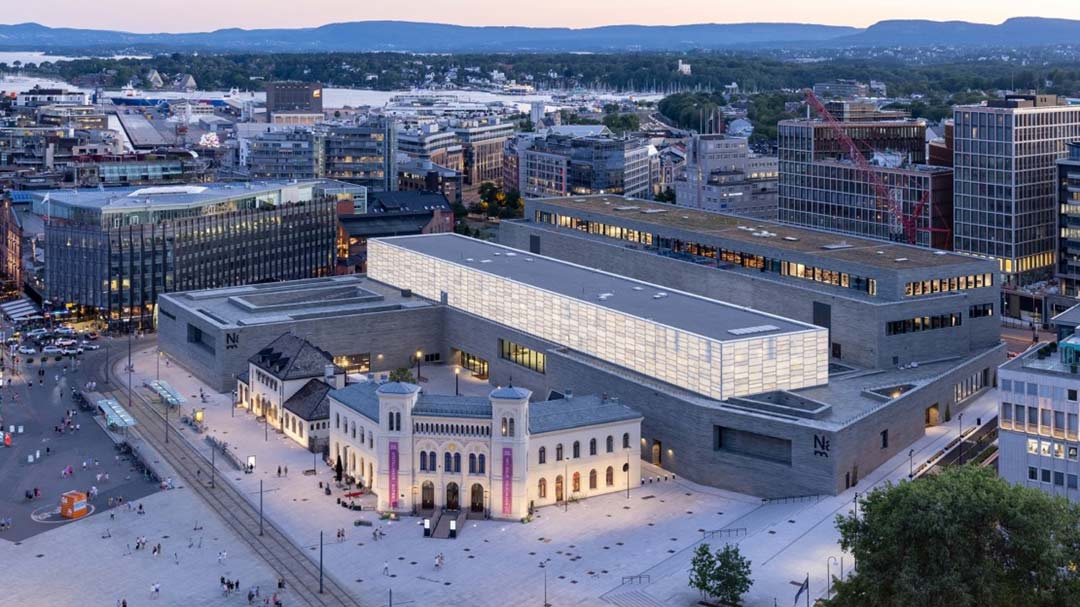Standing proudly in the center of Oslo, next to the harbor, Norway’s Nasjonalmuseet (national museum) is now ready for visitors. This project took nearly 30 years to come to fruition, with the idea first being discussed in the 1990s. The building, which was designed by German firm Kleihues + Schuwerk, opened its doors on June 11 and is a massive 584,480 square feet. This makes the institution one of the largest art museums in Europe, right behind the State Hermitage Museum in Russia and the Louvre in Paris.

Photo: Iwan Bann, nasjonalmuseet.no
The size of the museum facilitates the merging and new housing of four existing institutions – the National Gallery, the Museum of Architecture, the Museum of Decorative Arts and Design, and the Museum of Contemporary Art. Nasjonalmuseet’s director, Karin Hindsbo, said, “We could not have dreamt of a better location.”
The collection inside the museum is featured in two main parts that are arranged thematically and chronologically. As described on Nasjonalmuseet’s website: “The displays on the ground floor focus primarily on design from antiquity to our own era and crafts from 1970 to the present. Those on the second floor concentrate on visual art from the 16th century to the present. In addition, there are two rooms devoted to architecture.” There are also rooms to showcase national icons such as Edvard Munch and a floor for temporary exhibitions.
As is evident, there is much to see and experience at this new institution. It will be a delightful experience for all who visit. In fact, the main objectives of the museum are “to make art accessible to each and everyone and to reflect society and the era in which we live.” These objectives are at play throughout the museum in the interior design and in the wall texts. The design was done in such a way that it revolves around the comfort of the guest and the art descriptions exclude academic terms as much as possible so that everyone feels welcome and can better connect to the pieces.
It is clear that much thought and planning went into all aspects of this new institution throughout the past 30 years. It will no doubt be “a place for new ideas, inspiration and significant cultural experiences.”
